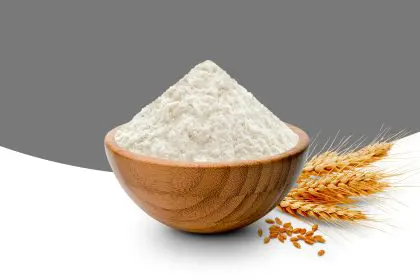Remember when milk was just something that came with your school lunch? Now it’s practically a controversial topic at dinner parties. One friend swears giving up dairy cleared their skin, while another credits Greek yogurt for their perfect digestion. Meanwhile, scroll through social media and you’ll find equal numbers of posts demonizing dairy as toxic and others celebrating it as a superfood.
So what’s the real story? Is dairy the nutritional hero of our childhood or a villain in disguise? The answer might surprise you—and it’s definitely more nuanced than the headlines suggest.
Let’s cut through the noise and get to what actually matters about dairy and your health. Spoiler alert—it’s not a simple yes or no answer, and that’s actually good news for cheese lovers and skeptics alike.
The dairy debate nobody’s talking about
First things first—humans have a weird relationship with dairy. We’re the only species that regularly consumes milk after infancy, and even stranger, we drink milk from other animals. From an evolutionary perspective, it’s a bit odd.
But here’s where things get interesting. About 10,000 years ago, a genetic mutation spread through human populations that allowed adults to digest lactose, the main sugar in milk. This mutation, called lactase persistence, varies dramatically across different ethnic groups. About 35% of the global population has it—mostly people with European ancestry.
This means that for roughly two-thirds of adults worldwide, drinking milk can cause varying degrees of digestive discomfort. Yet somehow this basic biological reality got lost in the dairy debate, reduced to black-and-white claims about whether dairy is universally “good” or “bad.”
The truth is that dairy isn’t inherently healthy or unhealthy—it depends entirely on your individual body. What works perfectly for one person might be problematic for another, and both experiences are equally valid.
When dairy deserves its superfood status
For those who tolerate it well, dairy offers an impressive nutritional package that’s hard to match.
Dairy provides complete protein containing all essential amino acids, making it particularly valuable for muscle recovery and growth. A single cup of milk delivers around 8 grams of high-quality protein—about the same as an egg.
The calcium content is well-known, but often misunderstood. Dairy products don’t just contain calcium—they deliver it in a highly bioavailable form alongside vitamin D and other cofactors that enhance absorption. This package deal is hard to replicate with supplements or even many calcium-rich plant foods.
Fermented dairy deserves special mention. Yogurt, kefir, and certain cheeses contain beneficial bacteria that support gut health. These probiotics can improve digestion, enhance immune function, and even influence mood through the gut-brain connection. The fermentation process also reduces lactose content, making these foods easier to digest for many people with mild lactose sensitivity.
Recent research has even challenged the long-held belief that dairy fat is harmful. Full-fat dairy contains conjugated linoleic acid and other beneficial fatty acids that may actually improve metabolic health. Multiple large studies have found no association—or even inverse associations—between full-fat dairy consumption and heart disease or diabetes risk.
When dairy deserves its villain reputation
Despite its potential benefits, dairy can cause legitimate problems for certain individuals.
True milk allergy involves the immune system reacting to milk proteins, primarily casein and whey. This differs from lactose intolerance and can cause potentially serious symptoms like hives, wheezing, vomiting, and in severe cases, anaphylaxis. For people with milk allergies, avoidance isn’t a trend—it’s essential for safety.
Lactose intolerance affects approximately 65% of the global population to varying degrees. Without sufficient lactase enzyme, consuming lactose leads to symptoms like bloating, gas, diarrhea, and abdominal pain. Severity varies widely—some people can handle small amounts or certain dairy products, while others experience symptoms from even trace amounts.
Some evidence suggests that A1 beta-casein, a protein found in most conventional cow’s milk, may trigger inflammatory responses in sensitive individuals. This has led to interest in A2 milk, which contains only the potentially less inflammatory A2 beta-casein protein. The science is still developing, but anecdotally, some people who react poorly to regular milk find they can tolerate A2 milk.
For those with specific conditions like acne or certain autoimmune disorders, dairy sometimes exacerbates symptoms. The hormonal components in milk—present even in organic varieties—may influence skin health or immune function in susceptible individuals. Again, this varies tremendously from person to person.
The environmental angle muddies the waters
The dairy debate extends beyond personal health to planetary health, further complicating straightforward answers.
Conventional dairy production has a significant environmental footprint, using substantial water, land resources, and contributing to greenhouse gas emissions. However, regenerative dairy farming practices can actually benefit ecosystems through improved soil health and carbon sequestration.
Plant-based alternatives sound environmentally friendly, but the reality depends on specific production methods and ingredients. Almond milk, for instance, requires enormous water inputs, while highly processed alternatives often involve energy-intensive manufacturing and global shipping networks.
This environmental dimension adds another layer of complexity to personal dairy decisions. For some, choosing local, small-scale dairy or limiting consumption to reduce environmental impact feels right. Others might prioritize plant alternatives despite their imperfections.
Finding your personal dairy truth
With such conflicting information, how do you determine what’s right for you? The answer lies in personal experimentation and honest observation.
An elimination trial offers the clearest insights. Remove all dairy for 3-4 weeks, then systematically reintroduce different types while monitoring how you feel. Start with fermented options like yogurt, which many people tolerate better than milk, then try different varieties and amounts.
Pay attention to subtle effects beyond digestion. Changes in energy, skin clarity, congestion, joint comfort, and mood can all provide clues about your relationship with dairy. Keep notes to help you recognize patterns that might otherwise go unnoticed.
Remember that tolerance isn’t all-or-nothing. Many people discover they have specific thresholds—perhaps a sprinkle of cheese on a salad works fine, while a glass of milk causes issues. Others might find that timing matters—dairy alongside other foods might digest better than consuming it alone.
Quality and processing level matter significantly. A highly processed cheese product bears little resemblance to traditionally produced aged cheese. Organic, grass-fed dairy contains different fatty acid profiles and potentially fewer inflammatory compounds than conventional versions. These distinctions can influence individual responses.
The middle path worth considering
For most people, the healthiest approach to dairy isn’t extreme devotion or complete avoidance—it’s mindful moderation based on personal response.
Consider dairy as a potential addition to your diet rather than a dietary staple or foundation. This perspective shift allows you to enjoy its benefits without overconsumption, which even for those who tolerate it well, can displace other nutritious foods from your diet.
Focus on quality over quantity. Smaller amounts of high-quality, minimally processed dairy often provide more satisfaction and fewer potential downsides than larger amounts of lower-quality options.
Explore the vast world of dairy alternatives without treating them as nutritionally equivalent. Plant-based milks serve different purposes—some work beautifully in cooking, others make better drinking options. Understand their nutritional profiles and choose accordingly rather than assuming they provide the same nutrients as dairy.
Resist the urge to demonize or deify any food group, including dairy. Nutrition science reveals increasingly that dietary patterns matter far more than individual foods, and that personalization is crucial. What constitutes an ideal diet varies tremendously based on genetics, gut microbiome, activity levels, and other factors unique to each person.
Moving beyond the dairy dilemma
Perhaps the most freeing realization is that you don’t need to take a hard stance on dairy at all. You can simply be a nutritional explorer, discovering what works for your unique body.
Your relationship with dairy may change throughout your life. Digestive capacity, hormonal status, stress levels, and other factors can all influence how you respond to different foods at different times. Remaining flexible and attentive to your body’s signals allows you to adapt as needed.
Instead of seeking universal truths about whether dairy is “good” or “bad,” embrace the nuance. The most valuable nutritional insights come not from headlines or influencers, but from your own body’s feedback when you provide it with various foods and genuinely listen to its response.
After all, in a world of conflicting dairy opinions, the only perspective that truly matters for your health is the one expressed by your unique biology. That’s a verdict worth discovering.
















